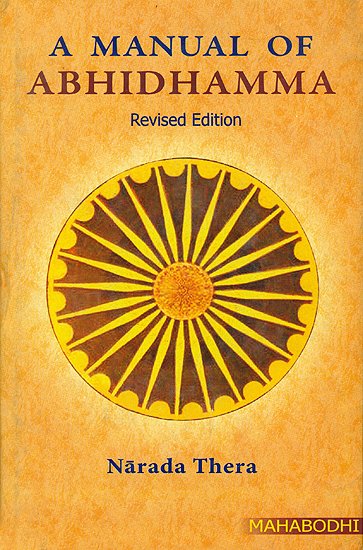Abhidhamma in Daily Life (by Ashin Janakabhivamsa)
by Ashin Janakabhivamsa | 66,666 words
English translation of "Abhidhamma in Daily Life" by Professor Ko Lay. Revised by Sayadaw U Silananda, International Theravada Buddhist Missionary University, Yangon, 1999...
Factor 1 - Saddha (faith)
It you believe what is logical you will develop saddha (faith). It has two characteristics, belief and clarity of mind.
Belief
Wrong belief rejects the truth of kamma and its results, the truth of existence of the past and the future lives, the Omniscience of the Buddha, a human personage, who knows all these truths, his Teachings, the Dhamma and his disciples, the Samgha. Such rejections are total disbelief which is different from vicikiccha. the sceptical doubt with partial acceptance.
Here faith ( saddha) means belief in kamma and its results. Saddha is also called “Saddhadhimokkha”, decision based on full faith. Thus, only faith in things of real nature is called real saddha, a wholesome mental factor.
Clarity of Mind
The second characteristic of saddha is clarity of mind. While giving alms or observing precepts, or meditating, one’s mind becomes filled with faith and clear. Just as a ruby of the Universal Monarch, when put in muddy water, will cause the impurities and sediments to sink and make the water to become crystal clear, so also saddha will eliminate all doubts, scepticism, and other mental defilements and purify the mind. Such is the characteristic of saddha.
Even children and some pet animals, even though they cannot understand the first characteristic of saddha, will perform good deeds in emulation of their elders and teachers. So they will pay homage to the Three Jewels of Buddhism (Ti-ratana), offer alms, and do service to others. While doing such good deeds they enjoy the fruits of the second characteristic, clarity of mind. Even unbelievers sometimes do acts of generosity such as donations to social services like hospitals, orphanages, homes for the aged. etc.. and enjoy clarity of mind.
Please study about true saddha in detail in the chapter on carita where saddha-carita is further explained.
False Faith
True faith consists of purity of mind and belief in the truth of Dhamma. But there are also false beliefs in the world. For example, some unscrupulous persons may proclaim that a Buddha statue or a pagoda is emanating radiance in order to lure people to give donations. People who are made to believe in bogus sacred relics, heretics who believe in their erroneous doctrines, etc., do not have true faith. They are just misled due to their ignorance, stupidity, naivety or simplicity, and this is to be categorised as delusion (moha) which is an unwholesome mental factor (akusala cetasika).
People who have faith in good orators, or in monks and hermits with elegant appearance and pleasant voices who can dispense good magic, charms, or medicines, are not true believers. This is delusion (moha) based on lust and intimacy. Such false faiths are classified in the books as muddhappassana, deluded devotion.
Yo balavatiya saddhaya samannagato avisadanano, so muddhappasanno hoti na avecca pasanno; tatha hi avatthusamin pasidati, seyyathapi titthiya.
(Ekanipata Anguttara Tika)
A Note of Warning
Today, the world is abound with liars and swindlers. In some religions new and singular doctrines are affluent; in Buddhism also some impersonators invent novel doctrines, new modes of meditation and mystic medicine to trick ignorant devotees and naive persons. When people give alms and money to such liars, such cheats, their acts stem from lust and delusion, not genuine faith. Because wise persons do not care to go against these tricksters, they become more and more popular day by day.
Nowadays, women often take the leading role in matters relating to charity and religious rituals, without pondering whether this is appropriate or not. One must not believe blindly. Careful reasoning should precede faith and devotion. So everyone should endeavour to better their knowledge in religious affairs, including female devotees.
Confusion Between Faith and Love
Today even virtuous persons confuse faith with love or affection. Many a devotee will revere Dhamma teachers with pleasant voices and personalities who give good instructions. If they respect and honour them only for their good ethical conduct, it is saddha (faith). But if they become attached to such teachers like their own relatives it is mixture of faith and love.
In Gotama Buddha’s time, disciples such as the Venerable Vakkali, and Minister Channa not only revered the Buddha but also loved him personally. So although faith was present in their hearts, there also was attachment (samyojana) which is unwholesome.
Some people accept doctrines and instructions through personal attachment; such attachments some times can promote knowledge and wisdom and enhance fulfilment of Paramis (Perfections). If wholesome mental factors are cultivated on account of personal attachments, then it is beneficial.
In the Patthana it is said, “Akusalo dhammo kusalassa dhammassa upanissayapaccayena paccayo”. Unwholesome mental states support the wholesome mental states by way of Natural Decisive Support Condition (a particular Patthana condition)."
So even small unwholesome attachments can lead to good states of mind. In this view, teachers and preachers should teach the Dhamma with sincerity and goodwill to promote such developments. And disciples and devotees, on their part, should properly practise what is taught, so as to get beneficial results.
